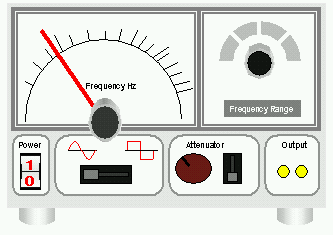Signal generator
|
|
A signal generator is an electronic instrument that generates repeating electronic signals.
It contains an electronic oscillator, a circuit that is capable of creating a repetitive waveform. The most common waveform is a sine wave, but sawtooth, step (pulse), square, and triangular waveform oscillators are commonly available as are arbitrary waveform generators (AWGs). If the oscillator operates above the audio frequency range (>20 kHz), the generator will often include some sort of modulation function such as amplitude modulation (AM), frequency modulation (FM), or phase modulation (PM) as well as a second oscillator that provides an audio frequency modulation waveform.
In musical sound synthesis, oscillators conventionally form the most fundamental synthesis building block. With analog synthesizers, they are realized with voltage-controlled oscillators and with digital or software synthesizers they are generated algorithmically. Modern software synthesis environments such as Csound have generalized the oscillator as a type of unit generator (UG), where UGs are primitive modules that produce, modify or acquire audio or control signals.

